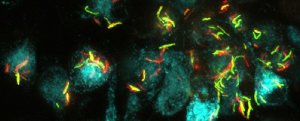Urgent need to improve donor screening and product testing, CDC says

Contaminated bone allograft material from a single manufacturer led to five diagnosed cases of tuberculosis (TB) and two deaths so far, according to CDC data.
In July, clinicians in two different states rapidly diagnosed and reported two cases of TB in patients who previously underwent spinal surgical procedures that used bone allografts, Jonathan Wortham, MD, from the CDC in Atlanta, and colleagues wrote in the Morbidity and Mortality Weekly Report (MMWR)opens in a new tab or window.
Both clinicians alerted the CDC because the cases looked similar to an outbreak in 2021opens in a new tab or window, involving the same manufacturer. The manufacturer issued a voluntary recallopens in a new tab or window on July 13, 2023. The 2021 outbreak involved 113 patients in 18 states who received contaminated bone allografts.
The bone allografts in this most recent outbreak were from a single deceased donor and were used in 36 recipients. Whole genome sequencing in infected recipients and positive cultures from unused product confirmed that the bone allograft material was the source of the bacteria.
As of December 20, 2023, five recipients had tested positive for TB. An additional 10 had signs or symptoms consistent with TB and 79% had positive interferon-gamma release assay results.
Eight hospitals and five dental offices in seven states received the bone allograft product in question, but the product was rapidly removed from further distribution, the authors wrote, preventing as many as 53 additional procedures with the TB-contaminated material.
The CDC also informed the affected healthcare facilities to quarantine any unused product and implement TB prevention and control measures with affected patients. Patients who received the material were started on multidrug treatment for TB.
The donors from both the 2021 and 2023 outbreaks had evidence of sepsis, which should have made them ineligible for tissue donation, Wortham and investigators commented in the study. The donor from this year’s outbreak also had pneumonia and radiographic changes consistent with a TB diagnosis. Neither donor was tested for TB.
“This second outbreak of bone allograft-related TB in recent years underscores the urgent need to implement improved donor screening and culture-based testing to prevent tissue-derived Mycobacterium tuberculosis transmission,” the authors wrote. Frozen live-cell tissue allografts have expiration dates of months to years after manufacturing, allowing for ample time for both culture-based testing and additional scrutiny of donor medical records, they noted.
The manufacturer involved in both outbreaks did test for M. tuberculosis using nucleic acid amplification before distribution, but this method did not detect the organism, possibly due to low levels of the bacteria. Although nucleic acid amplification tests give more rapid results than culture-based testing, they are less sensitive. Culture-based testing, however, can also yield false-negative results and can take as long as 2 months. In this instance, liquid cultures did not grow M. tuberculosis until 40 days after inoculation, although cultures will usually deliver a positive result in 14 to 21 days, the authors said.





COMMENT
Although one could imagine other 4-month moxifloxacin regimens that might be investigated, the present results discourage studying them at this time. A key finding of this trial is that the shorter time to culture conversion seen with the moxifloxacin regimens did not accurately predict long-term outcomes. A better understanding of why this occurred is needed.